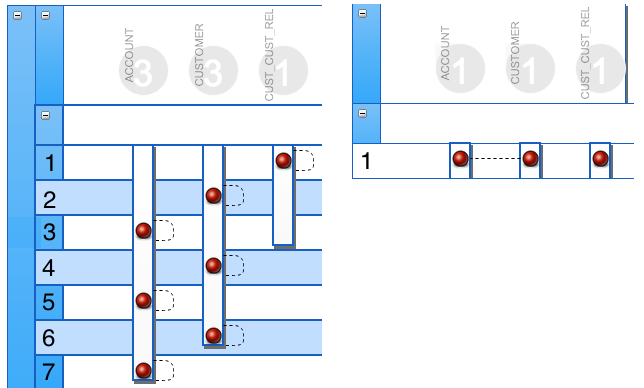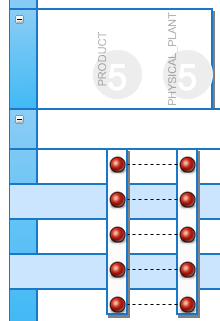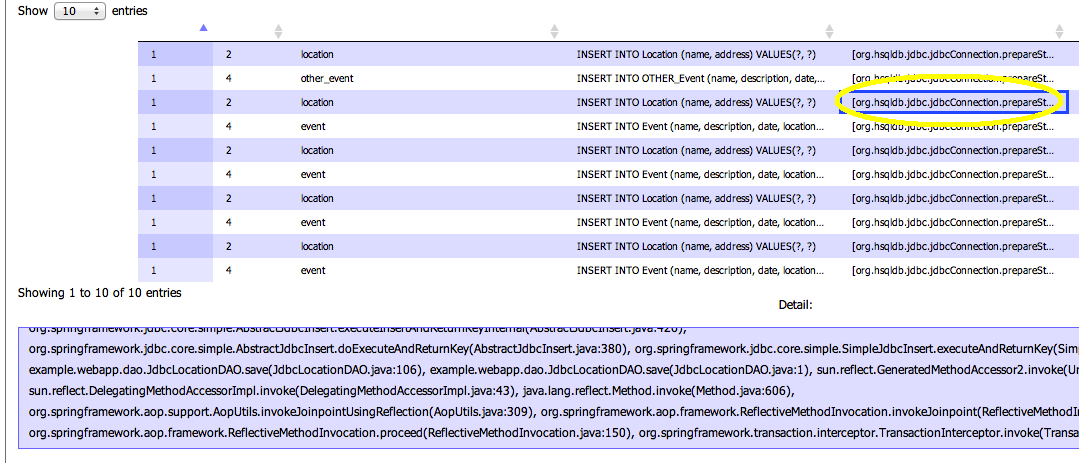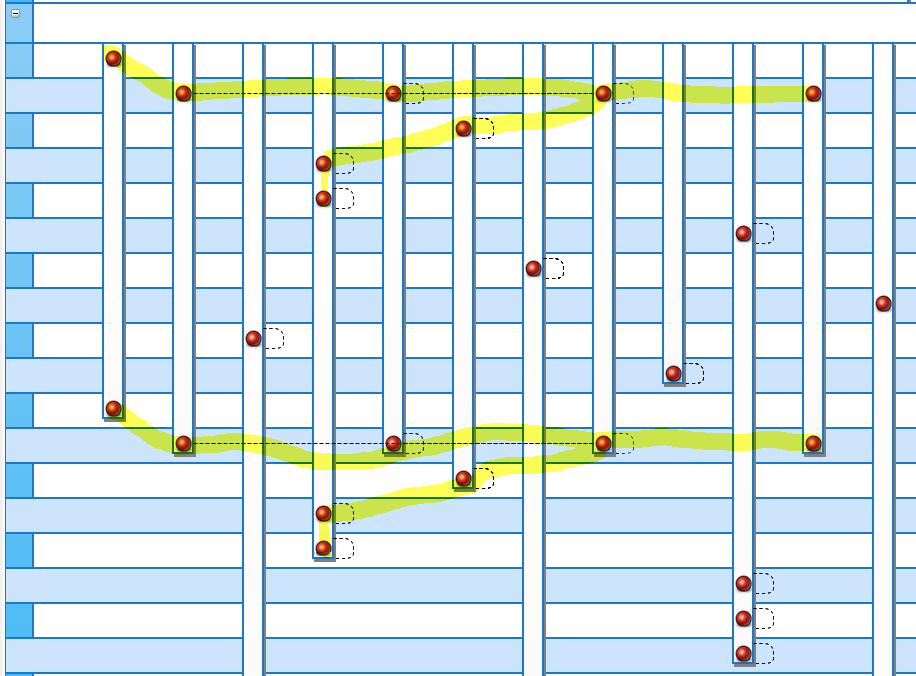The Problem
Too many database calls is the #1 server side performance problem.The Solution
Reduce query counts by first visualizing which SQL make repeat visits to the same tables.wuqiSpank's unique "SQL Sequence Diagram" and live SQL performance graphs make it possible.

Download and Install
Download and install the wuqiSpank beta release. You can import your SQL from plain text files. Released under Creative Commons Non-Commercial license.
Did you miss CMG 2014?
Here are the slides and the video of the wuqiSpank presentation.
Draw the line!
Who is responsible for software performance? The developers who coded the system or a performance tuning team? It time to finally draw the line of responsbilities of who owns what. With wuqiSpank, we finally have a tool that helps developers understand and take responsibility for the performance of their code's SQL data access strategy.
- Like no other tool in the industry, wuqiSpank's unique "table centric" SQL sequence diagrams show the well-known SQL anti-patterns that heavily impact performance.
- How does wuqiSpank get your SQL? Manual import (all platforms) or live SQL tracing (Java only).
- For Java applications, wuqiSpank shows the exact line of Java code that executed SQL statement.
- Will performance suffer when moving from a small dev database to a large prod db? Here is wuqiSpank's plan to help avoid that.
- wuqiSpank groups together all SQL from single click of your web app (Java only).
Are you a DynaTrace user?
Vote here (DT Community Logon required) to get wuqiSpank functionality added to DynaTrace.
Chunky Outperforms Chatty
wuqiSpank aims to help developers address the #1 performance problem in enterprise software (too many calls to DB. This sample code and performance test shows how a 'chunky' SQL data access strategy outperforms 'chatty'. But don't take my word for it, download and run the 5 different samples yourself.wuqiSpank. Best name ever for a monitoring tool?
We challenge you to find a monitoring tool with a better name than wuqiSpank.A wuqi is an Unnecessary Query Invocation. But but but what does the W stand for? Woefully. wuqiSpank spanks wuqis. Got it?
3rd Party Dependencies
This project sits on the shoulders of InTrace, FoundationDB, Wicket, and others..
Gallery
The graph on the left, below, shows code with 7 SQL statements, each selecting data from just a single table. The graph of the refactored code, on the right, returns the exact same data, but more efficiently with this single query:SELECT * FROM CUSTOMER C, ACCOUNT A WHERE C.CUST_ID = A.CUST_ID AND C.CUST_ID IN (SELECT CUST_REL_ID FROM CUST_CUST_REL
WHERE CUST_ID = 'SPANK-001')



